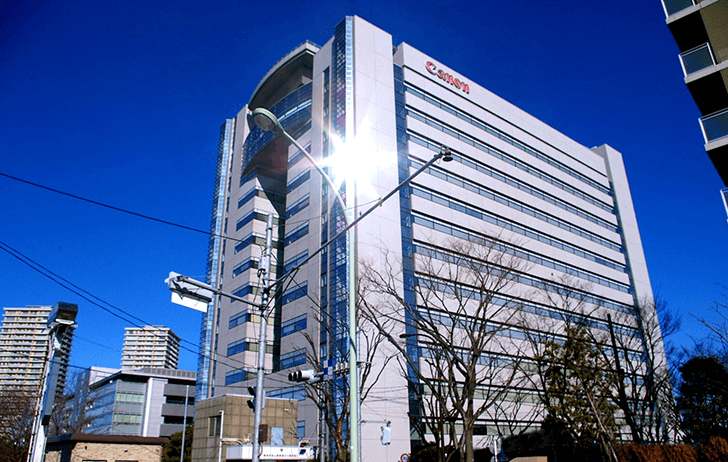Canon has released its fiscal 2021 financial results, and even with all of the challenges, Canon has done pretty well and exceeded expectations in a few of its industries.
Even with the pandemic, Canon's imaging business continues to turn a profit. Camera and lens production has obviously been affected for the last couple of years. Canon saw a reduction of 20,000 units year over year but still managed to move 2.74 million cameras, and wouldn't have seen a decline had it not been for the pandemic.
Canon EOS R5 and Canon EOS R6 continue to be a driving force for Canon, and the Canon EOS R5 C will likely help to get new customers and to continue sales growth.
Full Canon FY 2021 Material
From Canon Inc.
In 2020, cameras, which are a core component of the imaging group, saw a significant decline in unit sales due to the impact of COVID-19. As a result, we posted a temporary decline in the profitability of this group. However, profitability recovered to a normal double-digit level in 2021.
Cameras are not the only component of our imaging business. It also covers a wider range of businesses, including the input of visual information using lenses and sensors, and also the provision of solutions utilizing this input. In order to further expand our business in the future, we will not only expand sales of network cameras but also leverage the optical technology we have cultivated over the years and actively invest in the development of new businesses such as automotive sensors and XR.
As for camera demand, despite concerns that it would shrink significantly due to the pandemic, demand remained relatively strong. This reflects a number of factors, including an increase in the number of people using their extra leisure time to capture videos and photos in the home and disseminate them online, and the impact made by new full-frame mirrorless cameras released by each company.
As for the size of the market in 2021, although it shrank by 200 thousand units, due to the insufficient supply of products by each company, it was still 5.4 million units.
Our unit sales in 2021 totaled 2.74 million units, 20 thousand units fewer than in 2020, also due to the insufficient supply of products, particularly entry-class cameras. However, for the EOS R5 and EOS R6, sales volumes and price levels remained stable, despite them being in the market for more than a year. Additionally, unit sales of our RF lens lineup, which was expanded to 26 lenses through the addition of 8 new products, increased substantially, thanks to their synergy with cameras.
We have been expanding our core product lineup by increasing the number of highly profitable EOS R systems over the years. As a result, the sustained profitability of the camera business has increased significantly, resulting in an overall 25% increase in camera sales and a significant improvement in profitability in 2021.
In 2022, the size of the camera market is expected to be 5.65 million units, a 5% increase over 2021, which takes into account the carryover from 2021 due to supply shortages.
In order to capture the growing need for high-quality image expression, we will continue to further strengthen the cameras and the RF lenses of the EOS R system.
Earlier this month, we introduced the EOS R5 C, a hybrid cinema camera, to further capture the growing demand for video. The EOS R5 C is an easy to carry around compact and lightweight model that offers further enhancement in video performance over the EOS R5, enabling long-time shooting of high-quality images at 8K and 60 frames per second.
As for RF lenses, we will work to increase unit sales of our lineup, which currently consists of 26 models, through further synergy with cameras.
Through the timely launch of products that expand the range of choices available to users, we will maintain high profitability by increasing sales and improving our product mix.


They basically projected a modest increase but got a slight decline.
By the end of 2022 they'll have a very complete line up of RF bodies: R1, R3, R5, R5C, R6, plus "R7" APS-C, a replacement for R, and a cheap replacement for the RP.
They seem to be calling 2022 "the year of the camera body", so I rather hope that 2023 will be the year of the RF lens, as there are still many gaps in the range, compared to the EF range.
Emphasis added: "Our unit sales in 2021 totaled 2.74 million units, 20 thousand units fewer than in 2020, also due to the insufficient supply of products, particularly entry-class cameras."
But, I took a look at Canon Price Watch and it does indeed seem that many of the Rebel models are out of stock at major retailers. I guess I hadn't been paying attention to the low end of the market.
Before people start quoting old figures about DSLR shipments, I'm not saying they are pulling the plug today, but that they are sending strong signals that they don't see a future for the DSLR market.
The low price EOS RP replacement that seems certain to come later this year may point the direction, but there are multiple models of cheaper DSLRs out there (not to mention M series models), so they can't cover all those bases with one release.
I therefore suspect we'll see the existing DSLRs stay in production for multiple years to come - and maybe even re-released in a minimally updated body (so they can look 'fresh'). The same with M series bodies. But the future does seem to be RF mount.
it’s makes sense.
Canon is #1 in global market share for digital cameras in 2020, and their share grew
Looks like Canon is growing stronger... albeit in a shrinking market.